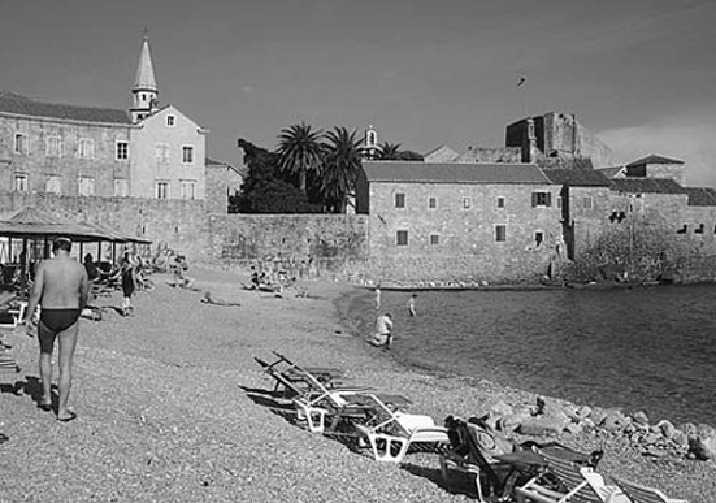Travel Reference
In-Depth Information
Budva's ancient history (dating back at least to the fifth century
B.C.
) is arguably more
illustrious than Kotor's. It began as an “emporium” (market and trading center) for Greek
seamen, and extremely valuable jewelry uncovered here indicates that some pretty import-
ant people spent time in Budva. And yet, Budva isn't about history; it's about today. As in
many Mexican vacation areas, the Old Town is just one more part of the resort experien-
ce—it's basically treated as a backdrop for outdoor dining and nightclubs.
A 10-minute stroll tells you all you need to know about Budva. The layout is simple and
intuitive—a peninsula (flanked by beaches) with a big Venetian-style bell tower. From the
parking lot, a pedestrian-only, tree-and-café-lined boulevard runs away from the Old Town.
But to see the historic core of town, go instead through the Old Town walls and wander
up the main drag, Njegoševa. Out at the tip of town, you'll pop out into a small café-lined
square with a
Catholic church
(on the left, with an unusually modern 1970s mosaic behind
the altar depicting St. John preaching on the Montenegrin coast) facing the Orthodox
Holy
Trinity Church,
with gorgeous and colorful Orthodox decorations inside. Beyond that is a
huge
citadel
that's imposing on the outside but dull on the inside; it's not worth paying the
€2 to tour its museum of model ships, antiquarium (old library), restaurant, and less-than-
thrilling sea views (long hours daily).

